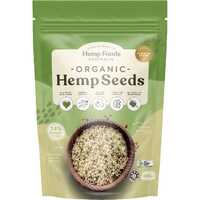As health awareness grows across the world, people are increasingly concerned about what they eat. From limiting meats and carbohydrates to avoiding sweets and processed foods, there are lots of ways to improve your diet and live a healthier life. Along with paying more attention to food and nutrition, people are also learning about the importance of meal timing. As it turns out, when you eat is almost as important as what you eat.
Let's take a deep dive into meal timing and food rhythms, understanding nutrients and looking at the benefits of specific eating schedules.
What Foods to Eat and When
Before we look at the pros and cons of specific eating schedules, it's important to understand all the elements that contribute to a healthy diet. While most people know good food when they see it, understanding food categories can help you manage your diet much more effectively. There are six components to a healthy diet, which can be put into three basic categories. Whether you're looking to lose weight, tone your body shape, or access more energy, you need all of these elements to live your best possible life.
Water
As the foundation of life, water is an absolutely essential part of any diet. Most people don't drink enough water, which is 10 cups a day for men and 8 cups a day for women. Try to set good habits by drinking water throughout the day, and buy a refillable bottle to take with you wherever you go. Australia has great tap water by global standards, but you can make it even better by using a water filter.
Macronutrients
Macronutrients are the nutrients we need in large amounts. There are only three of them, all of which are used by the body to create energy and maintain critical systems. While we should eat all three of these macronutrients every day, when you eat them can have a huge impact on how well they work.
- Carbohydrates provide energy to support physical functions and activity. They are present in fruits and vegetables, breads and grains, and sugary foods.
- Proteins are used to build and repair muscles, make hormones, and provide energy. They are found in meats, poultry, seafood, eggs, dairy products, nuts, seeds, and legumes.
- Fats absorb vitamins, provide energy, protect organs, support cell growth, and manage cholesterol. They can be found in fish, nuts, seeds, vegetable oils, and dairy products.
Micronutrients
Along with the big macronutrients, our bodies also need smaller doses of many micronutrients. These compounds include vitamins and minerals, and they have a significant impact on all aspects of health and wellbeing.
- Vitamins come in many forms, including 13 essential vitamins: A, C, D, E, K, and the B vitamins: thiamine, riboflavin, niacin, pantothenic acid, biotin, B6, B12, and folate. Vitamins are either fat-soluble or water-soluble.
- Minerals include macrominerals: calcium, phosphorus, magnesium, sodium, potassium, chloride, and sulphur; and trace minerals: iron, manganese, copper, iodine, zinc, cobalt, fluoride, and selenium.
Specific Eating Schedules
Along with food quantities and combinations, the frequency of food intake has a huge impact on how well it works. While metabolism differs considerably between individuals, certain diets are known to affect us in similar ways. Let's take a look at some common eating schedules, from standard three meals a day to fasting and frequent eating.
Three meals a day
Most people in the western world take three meals a day for granted. However, while this way of eating may seem like a constant factor of life, it's far less common than many people think. The modern breakfast, lunch, and dinner eating schedule is actually fairly recent, and eating times also differ considerably across the world.
Breakfast
The ancient Romans didn't focus on breakfast or dinner, snacking instead on either side of a large noon-time meal. Breakfast wasn't really a standard until the 17th century, and even then, it was largely enjoyed by the upper classes. The morning meal came into its own during the industrial revolution in the mid-19th century, as workers needed energy before heading off to the factories.
Lunch
It might be a sideshow today, but lunch was enjoyed as the primary meal from Roman times to the Middle Ages. Before the world of the internet, television, and electricity, the whole day was structured differently, and people got up much earlier. Eating lots of food in the middle of the day just made sense, as people could deal with their hunger without filling their bellies right before bed.
Dinner
The main meal stretched further into the day over the centuries, largely due to the advent of artificial lighting. Most people were eating three meals a day by the late 18th century, and the evening meal was prioritised by the early 19th century. These changes were influenced by longer working hours and the advent of electricity, with people wanting a big meal when they returned home from work.
Types of Fasting
Fasting simply means abstaining from eating and sometimes drinking, for a prolonged length of time. You can fast for any period, from a few hours to many days or even weeks. Traditionally, fasting practices were employed for spiritual and religious reasons. Even today, millions of Muslims partake in fasting and reflection during Ramadan.
From a health perspective, regular fasting may help lower inflammation, improve circadian rhythms, and increase stress resistance. In addition, it may improve the modulation of the gut microbiota by giving your digestive system a break.
The act of fasting is incredibly diverse, but most routines can be split into the following categories:
Extended fasting
Long-term fasting involves abstaining from food over an extended period, often for many days. This traditional form of fasting was often ritualised, with people looking for a spiritual connection by avoiding the physical influence of food. Extended fasting can be incredibly dangerous, especially for people who don't know what they're doing. While it may help improve certain health outcomes, you should always talk to your doctor before starting any kind of extended fast.
Intermittent fasting
Fasting has received lots of positive attention lately, mostly due to the rising popularity of intermittent fasting. While there is no precise definition of this practice, it always involves short, repeated food avoidance or restriction periods. Some popular examples include the 5:2 diet, with five days of eating and two days off per week, and the 16:8 diet, with 16 hours of eating and 8 hours off per day. While these diets are not for everyone, they closely resemble the feast-and-famine eating pattern we evolved with for thousands of years.
Food restriction
Along with avoiding foods altogether, you can also restrict or boost some foods on a short-term basis. Whether you eat specific foods before you work out or focus on a particular macronutrient for a few days a week, this can be a great way to maximise the nutritional impact of certain foods. For example, professional athletes sometimes consume only high-quality fats and carbohydrates for 2-3 days a month, with a controlled reduction in protein intake, allowing their guts to heal. In contrast, limiting carbohydrate and fat content for limited periods is sometimes used to support weight management.
Many people employ food restrictions on a micro-scale, eating certain meals to help boost energy or improve sleep. For example, high carbohydrate, moderate protein, and low-fat foods are often recommended 30-60 minutes before exercising. However, this should be limited to a snack, with your body needing to rest for 2-3 hours after a full-size meal. After you finish a workout, eating a meal rich in protein and carbohydrates within an hour can also be beneficial. When you choose to eat affects your sleep, with complex carbohydrates great before bed as they trigger the release of the sleepy hormone serotonin.
While it's not really a form of fasting, seasonal eating can be another great way to improve your diet. If you only consume foods when they're readily available in fresh form, you can avoid the problems associated with long-term food storage and processing. Seasonal eating is a great way to sync your personal eating habits with the surrounding environment and get maximum nutritional goodness from every bite.
Small Frequent Meals
Fasting is all about restricting your eating, but that's not the only way to influence your diet. Along with eating fewer meals on a daily or weekly basis, you can also choose to eat smaller meals more often. Some nutrition guidelines recommend 6-10 meals per day, but this number can vary based on personal preferences and intended results.
According to proponents of this diet, eating smaller meals can help you to feel full after limiting calorie intake, which makes it an effective weight loss tool. In addition, this style of eating is said to increase metabolism, stabilise blood sugar, and prevent dips in energy throughout the day. Based on studies into this type of eating, it may also help to improve blood fat levels and reduce the risk of heart disease.
When you pay attention to the rhythm of your eating, you're more likely to feel engaged with your daily diet. Instead of feeling bored and unmotivated by food restrictions, you can enjoy eating different things at different times. If you're looking for great natural foods to eat throughout the day, Healthy Being has everything you need. From everyday groceries to organic recipe ingredients and healthy snacks, great food helps you enjoy a better quality of life. So start shopping today and enjoy free shipping options across Australia and worldwide delivery!


 Certified Organic
Certified Organic Vegan Friendly
Vegan Friendly  Vegetarian
Vegetarian Organic Ingredients
Organic Ingredients Dairy Free
Dairy Free Gluten Free
Gluten Free Keto Friendly
Keto Friendly






























